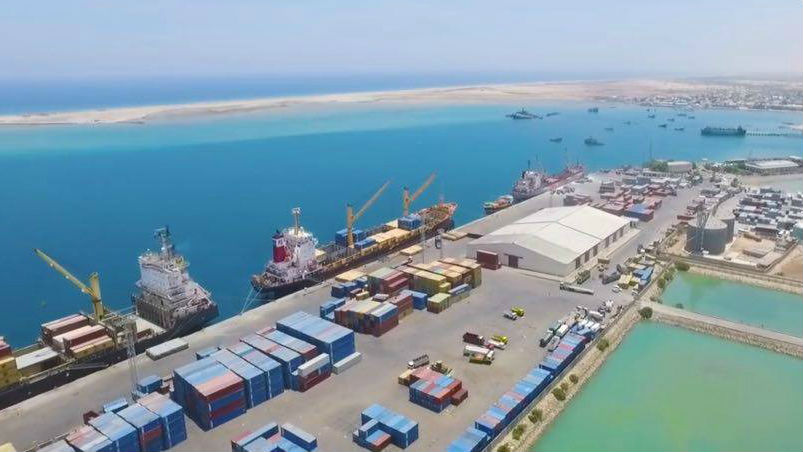Ports: East Africa Lagging Behind West Africa

Shipping analysts Dynamar of The Netherlands expect east and southern African full container volumes to grow by 7,000,000 TEUs by 2020, but the company highlights that east Africa is lagging behind west Africa when it comes to terminal operations.
West Africa
West Africa is clearly moving into the direction of maturation. Compared to East Africa, the ships are bigger, there are more carriers and there is a substantial presence of international port operators. Currently, 112 box ships sail the core Asia-West Africa routes. Deployed by ten different carriers, their average capacity is 5,300 TEUs, with the biggest ship measuring no less than 13,100 TEUs.
The service employing the largest units is a hub and spoke operation, connecting the Lomé hub in Togo with a large number of regional ports by feeder. Foreign terminal operators include APM Terminals, Bolloré, China Merchants, CMA Terminals, DP World, ICTSI, Portek and TIL Group.
East Africa
East Africa still has some way to go compared to West Africa. With 2,900 TEUs, the average of the 52 container vessels serving the area from Asia is little more than half the size of its West African sister. Including the largest 4,900 TEUs unit, they are operated by nine different carriers.
Hub and spoke is not practiced in East Africa. Hutchison Port Holdings (Dar es Salaam, Tanzania) was the single foreign terminal operator in the region until, recently, DP World started operating Berbera, Somalia, and sister company P&O Ports announced the development of Bosaso, Somalia.
Ever more container ships are visiting Somali ports with eight different services operated by six carriers: CMA CGM, Emirates Shipping, MSC, PIL, Simatech and X-Press Feeders. Ports called are Berbera, Mogadishu and Kismayo. The 17 ships used have an average capacity of 2,000 TEUs, ranging between 1,100 TEUs and 2,700 TEUs.
In all fairness, East Africa is the smaller area. Including Somalia there are just three littoral countries with an overall 5,300-kilometer coastline along which six ports are being served. In addition, East Africa comprises seven landlocked countries. The total population across all countries is 317 million.
In contrast West Africa has 20 littoral plus five landlocked countries, 9,700 kilometers of coastline and nine ports serving 491 million people.
South Africa
Despite South Africa's political turmoil and its year 2016 3.3 percent imports/exports decline, the country's fundamentals are still considered sound. Like other emerging markets, it should benefit from a stronger currency, lower inflation, declining interest and better economic growth. Commodity prices and mining exports are picking up and a recovery of reefer produce is in sight.
Expensive to be landlocked
16 of Africa's 56 countries are landlocked. Their lifeline is the connection with the nearest seaport in an adjacent country. Inland transport is up to two-and-a-half times more expensive than ocean carriage. This means that 228 million people in 11 east and southern African countries pay more for their imports and get less for their exports, impacting welfare.
As befits good neighbors, authorities in the coastal countries, often with the help of China or Japan-based investors, have initiated grand plans to develop new corridors. These come in addition to the many passageways already in existence some of which may be improved, expanded or extended.
Two startling, because of the required investment in particular, such planned corridors are:
LAmu Port-South Sudan-Ethiopia-Transport corridor (LAPSSET)
LAPSSET is to connect the UNESCO World Heritage port of Lamu, Kenya, with Sudan and Ethiopia through an 880-kilometer highway plus a 1,710 kilometer railway. The first of 32 berths is slated for commissioning in 2018. Total costs including a 2,240 kilometer crude oil pipeline are estimated at $24.5 billion, equal to 40 percent of Kenya’s 2015 GDP. LAPSSET may ultimately be stretched to an equatorial land bridge touching the South Atlantic at Douala, Cameroon.
Mwambani Port and Railway Corridor Company (MWAPORC).
MWAPORC includes a deep-sea port at Mwambani, Tanzania, handling bulk and up to 18,000+ TEU box ships. An 8,500 kilometer railway is to link the Indian Ocean from Tanzania through Rwanda, Uganda and Congo all the way to Congo's Banana on the South Atlantic Ocean. The cost is estimated at $30 billion.
Ups and downs
Every continent with a great future has its ups and downs. The worldwide trade slowdown has affected the eastern and southern African economies, albeit not all of them. South Africa, normally the larger area’s growth generator, is struggling. In contrast, Kenya is doing very well, and Mombasa expects a throughput of 2.5 million TEUs by 2020.
Tanzania could barely exist without the World Bank, currently financing 30 projects worth some $4.3 billion. This sum includes $690 million for a second container terminal to double Dar es Salaam’s capacity to 1.2 million TEUs.
Things will pick up, says Dynamar. Yes, politically troubled South Africa caused a decline of the overall trade by one percent in 2016. However ,TEU volumes for Southern Africa as a whole are forecast to grow by 3.2 percent compound annual growth rate over the period 2015 to 2020. For East Africa and the Indian Ocean Islands combined, the expected growth rate is nearly 10 percent.
The overall number of full containers to be carried by 2020 is anticipated to exceed seven million TEU for the first time. There are not too many container trades able to post similar forecasts!
Dnyamar recently issued the fourth biennial edition of the East & Southern Africa (worldwide) Container Trades.
The opinions expressed herein are the author's and not necessarily those of The Maritime Executive.
